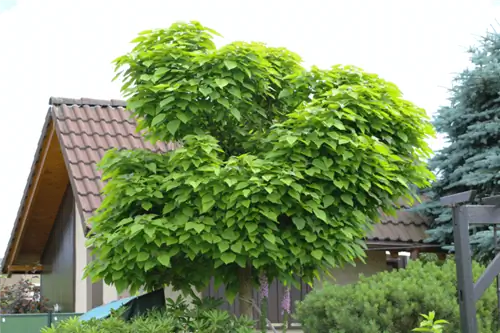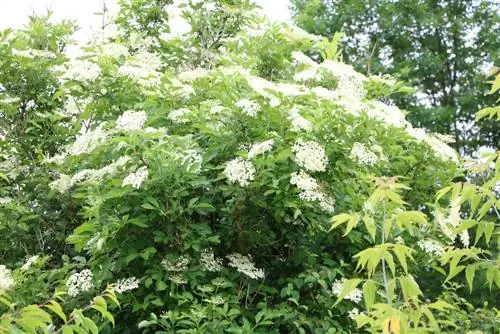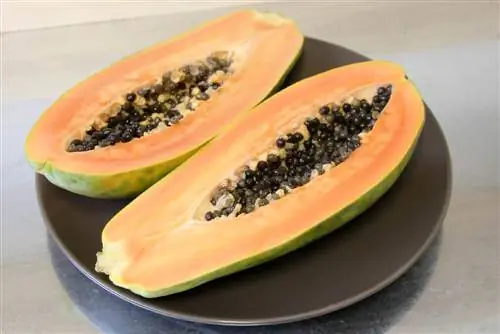- Author admin [email protected].
- Public 2024-01-07 19:19.
- Last modified 2025-06-01 06:48.
If a tree grows and grows on the neighboring property, it can soon become a major nuisance. Because shadows, slippery autumn leaves and falling fruits know no property boundaries. Fortunately, there are legal regulations that can help put an end to this.
Free tree planting on your own property
Basically, every property owner is free to design their property according to their ideas at any time. So also planting trees that can grow very tall. However, owners of surrounding properties must not suffer any significant disadvantage due to a tree that is too tall. That's why everyone who plants a tree must be aware of the minimum distances to the property line, maximum tree heights and mandatory pruning and of course comply with them.
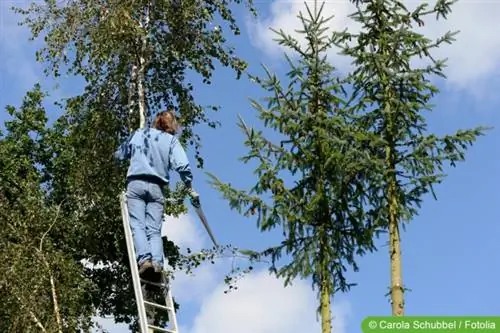
Regulation is inconsistent nationwide
When it comes to what is legally permissible when planting a tree, garden law and neighbor law are often mentioned. Both are a bit complicated because they don't actually exist. What is commonly referred to as garden law or neighbor law is a hodgepodge of different laws, regulations and case law that apply. Each federal state has its own laws and regulations, some of which differ greatly. The core of these regulations is the minimum distance to the property line, with the limitation of tree size tied to this.
Tip:
Also take a look at the building plans for your housing development. The tree species to be planted are often listed there.
Provisions of the federal states
The link between tree height and minimum planting distance by federal state:
| State | Tree height and minimum planting distance |
|---|---|
| Bavaria |
- lower than 2 m: 0.5 meters - larger than 2 m: 2 meters |
| Baden-Württemberg |
- lower than 1.8 m: 1 meter - weak pome and stone fruit trees: 2 meters - medium-sized trees, grafted fruit trees: 4 meters - large trees (conifers and forest trees): 8 meters - all other trees: 3 meters |
| Berlin |
- Fruit trees without standard trunk: 1 meter - large, vigorous trees: 3 meters - all other trees: 1.5 meters |
| Brandenburg |
- Fruit trees: 2 meters - all other trees: 4 meters - at least a third of the height |
| Hesse |
- strong-growing trees: 2 meters - Oaks, lime trees, poplars, walnut trees: 4 meters - strong-growing pome fruit trees and refined walnut trees: 2 meters - all other trees: 1.5 meters |
| Lower Saxony, Rhineland-Palatinate, Thuringia and Saarland |
- lower than 1.2 m: 0.25 meters - up to 2 m: 0.5 meters - up to 3 m: 0.75 meters - up to 5 m: 1.25 meters - up to 15 m: 3 meters - higher than 15 m: 8 meters |
| North Rhine-Westphalia |
- weak pome fruit trees: 1 meter - medium-growing fruit trees: 1.5 meters - strong growing fruit trees: 2 meters - other vigorous trees: 4 meters - all other trees: 2 meters |
| Saxony |
- lower than 2 meters: 0.5 meters - over 2 meters: 2 meters |
| Saxony-Anh alt |
- lower than 1.5 m: 0.5 meters - up to 3 m: 1 meter - up to 5 m: 1.25 meters - up to 15 m: 3 meters - higher than 15 m: 6 meters |
| Schleswig-Holstein | The minimum distance to the property line must be one third of the total height of the tree. |
Other federal states
In Mecklenburg-Western Pomerania, Bremen and Hamburg there are currently no laws regarding tree height and minimum distance.
Tip:
If you want to plant trees on a property in Bremen, you should follow the regulations of the neighboring state of Lower Saxony, as court decisions regularly refer to them.
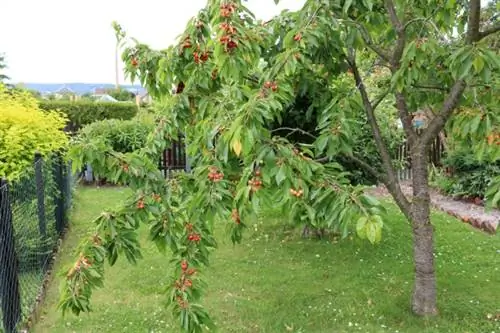
Rights in case of violations
If your neighbor's tree is too close and/or too high according to the current regulations, you can request that he remove the tree at his own expense or cut it back to the permitted height. But whether you can ultimately get the trees removed is another matter; after all, trees also enjoy a certain level of protection. You have a good chance if the tree can be proven to pose a danger to your building.
Barrier of limitations
Where there is no plaintiff, there is no judge. This saying also applies to neighborhood law. If your neighbor does not adhere to the specified minimum distance and maximum permissible tree height, you should complain early. For the sake of a peaceful neighborhood, you may be able to reach an amicable agreement with him. Otherwise, you must lodge an objection with the responsible authority. However, if you watch the tree grow idly for five years, your claims are time-barred.

Frequently asked questions
What about trees that are too tall and are right on the property line?
A tree on the property line belongs to both property owners. If you want to cut it back or cut it down, you must also get the neighbor's consent. Otherwise, he will be en titled to compensation from you.
What about trees that are too tall and are right on the property line?
A tree on the property line belongs to both property owners. If you want to cut it back or cut it down, you must also get the neighbor's consent. Otherwise, he will be en titled to compensation from you.
The neighbor's tree is overhanging my property, can I cut it back myself?
You must give the neighbor the opportunity to cut back the tree themselves within a reasonable period of time. If he doesn't respond after two requests and there is a concrete danger, according to current case law it is legal for you to cut off the branches yourself.
My neighbor's tree is taking too much light from me, can I insist on felling?
There is no legally guaranteed right to lots of light. If the tree is positioned correctly according to the applicable laws, you cannot request that it be felled.

